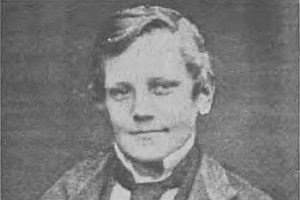- Author
- Lind, L.J.
- Subjects
- Biographies and personal histories
- Tags
-
- RAN Ships
- None noted.
- Publication
- March 1974 edition of the Naval Historical Review (all rights reserved)
The Happy Warrior
Admiral Sir Harry Holdsworth Rawson, GCB, GCMG, Grand Cross of Military Order of Portugal, Brilliant Star of Zanzibar, Order of Hamondieh and Osmanieh and Civic Cross of Belgium, will be remembered by but a select few today. However, in the 63 years of his service from 1857 to 1910 he rose from Naval Cadet to Admiral, Commander-in-Chief of the Channel Squadron.

HIS CAREER WAS SPICED WITH ACTIONS like the assault on the Taku Forts (China), the forcing of the Peiho River and surrender of Peking, the Battle of Ningpo, the actions at Yu-yao and Fungwa, the occupation of Cyprus, the bombardment of Alexandria, the expedition against Arabi Pasha, the storming of Mweli, the bombardment of Zanzibar, the Benin Expedition and the capture of Mogwane. The last seven years of his career were spent as Governor of New South Wales, in which post he advanced sound proposals for the then forming Royal Australian Navy.
Rawson was born in Cheshire on 5th November 1843. He was a direct descendant of the Rawsons of Yorkshire who traced their lineage back to some centuries before the advent of William the Conqueror. He was the second son and third child of Christopher and Frances Rawson.
His early education was obtained at Reading and later at Marlborough College but at the age of twelve, having shown an interest in the sea, he was enrolled at Eastman’s Naval Academy at Southsea.
The family had good connections, and in 1857 he was nominated as a naval cadet by the First Lord of the Admiralty, Sir Charles Woods. Young Rawson passed the entrance examination and was appointed to HMS Victory at Portsmouth.

On 9th April 1857 he joined HMS Princess Charlotte, a three decker, fitting out for Hong Kong. His naval career was nearly terminated in the first 24 hours. Rawson had the misfortune to fall 30 feet down the ship’s hold. The Morning Herald reported ‘He was picked up insensible with a frightfully bruised face and right arm and is now rapidly recovering under medical care’.
Princess Charlotte, commanded by Captain George King, RN, sailed from Spithead on 27th June 1857. Rawson soon learnt that a naval cadet’s lot was not a happy one. The food in the gun room was poor and consisted chiefly of weevilly biscuit and salt meat.
Discipline was harsh. One seaman was lashed up on the quarterdeck and flogged before the shoreline had slipped beneath the horizon. When other members of the crew complained at the harshness of the punishment the Commander had them clapped in irons.
The voyage was slow, Madeira was reached on 15th July, and Capetown on 4th September. Hong Kong was reached six months and four days after departure from Spithead.
Rawson had no regrets on leaving Princess Charlotte and joining HMS Calcutta. She was a two decked, 84 gun line of battleship built of teak, one of the last wooden hulls constructed at Bombay. Captain of Calcutta was Captain William King-Hall, RN, one of the most distinguished officers in the Far East.
Cadet Rawson could not have arrived in eastern waters at a time more propitious for an embryo admiral. The Indian Mutiny had set all India ablaze and fighting had broken out in China. On 27th December 1857 a combined British-French fleet bombarded Canton.
Calcutta was ordered to the Peiho River to join other British and French ships. An ultimatum was given to the Chinese to surrender the Taku Forts which dominated the entrance to the river. The Chinese refused, and on the evening of May 19th 1858 the boats of the fleet were towed by gunboats to the river entrance.
Rawson wrote an account of the action to his mother:
‘It was a pretty sight to see the gunboats with all the ships’ boats in tow, filing into the river under a heavy fire from the forts. The shot flew over us, but now and then struck near us. We went on until we had got past all the forts, when the gunboats anchored, and all the boats sheered off to the bank. Our Lieutenant had orders to take up the smallarm storming party from the boats, but did not want me to go, because if I was hurt, he would be responsible for it. So I hid behind a big blue jacket, and then we all, English and French, fell into line and rushed on to the forts . . . At this time the Chinese were running away like mad, and I could not even get within pistol-shot of them.’
Harry Rawson’s first ‘war’ was over by noon. The British and French flags were flying on the forts. A midshipman who fought beside Rawson in this action was later to rise to the highest post in the Royal Navy. He was Admiral of the Fleet, Sir A.K. Wilson, VC.
The peace treaty was signed in the Celestial Palace at Peking and Cadet Rawson was one of 76 officers to witness the ceremony.




